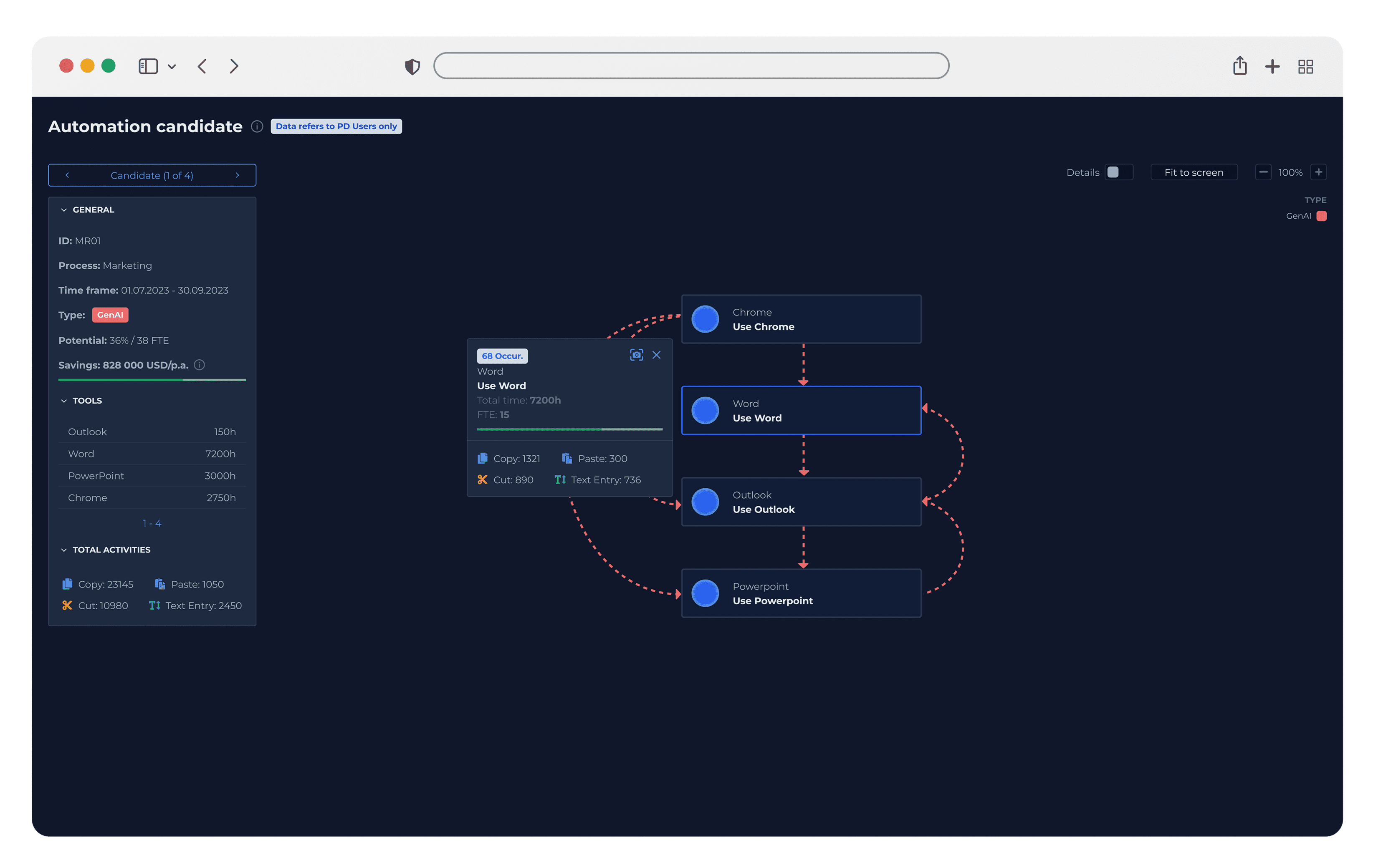Are you looking to unleash the efficiency beast within your business processes? In the world of modern productivity, automation is the key to freeing up time and increasing effectiveness. From identifying energy-draining tasks to crafting a winning automation strategy, this guide dives into practical examples of business process automation (BPA) that can revolutionize your workflow.
Let’s embark on a journey from chaos to calm, exploring how to automate my repetitive business processes, workflows, data validation, financial task streamlining, and more can transform your operations. Discover the power of automation and unlock a happier, more productive workforce with this step-by-step playbook.
Unleashing the Efficiency Beast in Business Processes
Identifying Energy-Draining Repetitive Tasks
The first step in leveraging business process automation is to pinpoint the repetitive tasks that are currently draining energy from your workforce. These are often mundane, routine activities that consume time but don’t necessarily require deep thinking or decision-making skills. Examples include data entry, scheduling appointments, or generating standard reports. These tasks can quickly become time sinks, especially when they’re prone to human error which leads to additional time spent on corrections.
To identify these energy-draining tasks, monitor your processes and ask your team about the tasks they find most monotonous. Look for patterns and frequency of tasks that could be automated. By doing so, you not only set the stage for introducing efficiency through automation but also free up your team’s time for more valuable, strategic work that can help grow your business.
Uncovering the Hidden Costs of Manual Processes
We often overlook the burdens they place on a company’s resources. You know the culprit – the hidden costs, slipping through the cracks while management isn’t looking. Picture this: precious hours wasted on double-checking data, crucial opportunities missed for not focusing on strategic initiatives, hard-earned money down the drain due to delays and mistakes. Feeling the frustration?

And let’s talk about your team – our often-forgotten soldiers on the front line. Manual tasks can quickly turn into morale-drain monsters, bogging down productivity. Plus, as your business dreams big, these pesky processes can throw a spanner in the works. News flash: they are not scalable, and battling this monster may lead to swelling headcount or spiraling working hours.
So, what’s the game plan? Roll up your sleeves and delve into a detailed analysis of where your team invests their time and the results they are achieving. It’s like treasure hunting in your own backyard, except you’re unearthing hidden costs. This treasure map gives you a clear vision of the potential gold mine of savings and efficiency sitting under the mountain of manual processes.
And that is the golden ticket you need to justify investing in business process automation. Think of it as giving productivity a much-needed adrenaline shot. Sounds too good to pass up, right?
Crafting a Winning Automation Strategy
Defining Goals and Objectives for Automation
When setting out to automate business processes, it’s critical to have clear goals and objectives. This clarity guides the automation journey and ensures that the results align with the overall business strategy. Begin by identifying what you want to achieve with automation:
- reducing the time spent on certain tasks?
- minimizing errors?
- improving customer satisfaction?
- scaling operations effectively?
- or baybe removing frictions between process, people and technology?
Set specific, measurable goals such as decreasing process time by a certain percentage or increasing throughput without additional staffing. Objectives should also be time-bound, giving your team a clear deadline for implementation and review. Having these goals and objectives in place will help in prioritizing which processes to automate first and will serve as a benchmark for measuring the success of your automation efforts. This strategic approach ensures that business process automation delivers real, impactful results and contribute to your business process optimization techniques.
Selecting Ideal Automation Tools without Overspending
Choosing the right automation tools is a balancing act between functionality and cost. To avoid overspending, start by assessing the specific needs of your processes and compare them against the features of various tools. Look for solutions that integrate well with your existing systems to avoid costly custom development. It’s also wise to opt for scalable tools that can grow with your business, rather than solutions that may become obsolete as your needs evolve.
Additionally, consider the total cost of ownership, which includes not only the initial price but also ongoing costs such as maintenance, upgrades, and training. Sometimes, investing a bit more upfront for a robust tool can save money in the long run. Booking a demo and seeing the platform in action is best way to ensure that you’re investing in tools that will deliver the maximum benefit for your budget.

Practical Examples: Business Process Automation in Action
Harnessing Intelligent Forms for Easy Data Entry and Processing
Consider the transformative power of intelligent forms in your quest for automation. These are not your run-of-the-mill forms – they’re smart, logically adept forms. Their capabilities extend far beyond the ordinary; they can:
- Authenticate Information: With built-in logic, these forms can verify data as it’s being entered.
- Highlight Incomplete Data: These forms prompt users for any missing inputs, ensuring comprehensive data collection.
- Direct Data Efficiently: They actively route the collated data to the appropriate databases or workflow processes.
Integrating intelligent forms can usher a significant shift in your approach to manual data entry. These forms tangibly cut down the time and margin of error, bringing about efficiencies that could make a big difference in your operational procedures. For senior leaders who are focused on driving transformation and operational excellence, the value of intelligent forms extends beyond mere convenience. They are an instrument for operational success waiting to be leveraged.
These forms can also be programmed to pre-populate fields based on known data, saving users time and ensuring consistency across entries. In environments where compliance and accuracy are paramount, like healthcare or finance, intelligent forms help maintain standards and reduce the risk of non-compliance.
Furthermore, the data collected is immediately available for analysis, leading to quicker insights and decisions. By incorporating intelligent forms into your processes, you’re not just automating data entry; you’re streamlining the entire data lifecycle from collection to actionable insights.
Routing and Approvals Made Easy with Automated Workflows
Automated workflows represent a paradigm shift for organizational document routing and approval processes. Harnessing the power of rule-based automation, we can guide documents effortlessly to their appropriate recipients, eliminating the need for manual handling.
Envision an automated purchase order system, seamlessly sending orders for managerial approval, then routing them to the finance department for payment – all happening in the background without missing a beat.
Picture the surge in process speed, the notable reduction in misplaced or forgotten documents. The introduction of automated workflows strengthens accountability by leaving an unambiguous audit trail, recording ‘who’, ‘what’, and ‘when’ for each approval. And those unexpected absences? KYP.ai can automatically defer tasks to an authorized stand-in, obliterating the possibility of delays.
What we offer is the embodiment of the “configure once, run indefinitely” philosophy. Upon defining the rules, our platform assumes full charge, liberating your valued staff members to engage in strategic, impactful tasks. Let’s explore:
- Accurate document routing without human intervention
- Immediate forwarding of purchase orders for approvals
- Provision of a clear audit trail for complete transparency
- Auto rerouting of tasks during employee absence
- Freeing of staff to undertake more substantive, strategic work
In your pursuit of organization-wide transformation and efficiency, automated workflows are more than just an option; they are a necessity, a robust solution. Not only does this enhance productivity, but it also instills a renewed sense of confidence across your organization. Your peers in the executive team will certainly appreciate this confident stride towards operational excellence, and your employees will relish their newfound focus on value-generating work as opposed to manual, repetitive tasks.
Assuring Data Quality with Automated Validation and Cleansing
Data quality is vital for any business, and automated validation and cleansing are essential processes to ensure high-quality data. Automation tools can perform real-time checks during data entry, flagging inconsistencies and errors immediately, which prevents the accumulation of bad data. They can also be scheduled to routinely scan databases, correcting common errors, standardizing formats, and removing duplicates.
This proactive approach to data management saves substantial time and money compared to the costs associated with manually cleaning data. It also supports better decision-making, as decisions are only as good as the data they’re based on. Automated cleansing routines maintain the integrity of your data, ensuring that reports, analytics, and business insights are reliable. By incorporating these automated processes, businesses can trust their data, reduce the burden on IT teams, and enable other automation initiatives to function at their best.
Business Process Automation in Financial Management
Financial management is an area that greatly benefits from business process automation. Through automation, tasks like invoicing, expense tracking, and payroll can be carried out with more efficiency and less error. For example, software can automatically generate and send invoices based on project milestones or time tracked, without the need for manual input.
Similarly, expense reporting can be simplified with tools that allow employees to upload receipts and categorize expenses, which are then automatically integrated into the financial system. Payroll systems can calculate hours worked, taxes, and other deductions automatically, ensuring employees are paid accurately and on time. By automating these financial tasks, businesses reduce the likelihood of human error, save time, and maintain a clear, audit-friendly record of all transactions. This not only streamlines financial operations but also provides real-time financial data that is crucial for making informed business decisions.
Streamlined Order Processing and Inventory Management
Order processing and inventory management are critical components of the supply chain that can significantly benefit from automation. With the right tools, orders received can automatically trigger inventory checks, initiate fulfillment processes, and update stock levels in real-time. This minimizes the risk of overselling and ensures that the inventory data is always accurate.
Automated systems can also provide notifications when stock levels are low, or when there is an unexpected surge in demand, allowing for timely reordering from suppliers. This increased efficiency reduces the need for large safety stocks and frees up capital for other investments. Moreover, automation in these areas enhances customer satisfaction by speeding up order delivery times and improving order accuracy. In a marketplace where speed and reliability are key competitive advantages, streamlined order processing and inventory management through automation can be a major factor in a business’s success.
Usefull Tips for Successful Business Process Automation
Balancing Automation with the Human Touch
While automation can vastly improve efficiency, it’s important to balance it with the human touch. After all, customer service and client relationships are often built on personal interactions. Use automation for routine tasks but maintain human oversight for areas where personal judgment and interaction are crucial. For instance, a customer service chatbot can handle common queries, but it should seamlessly hand off more complex issues to a human representative.
Similarly, in areas like sales or HR, while initial sorting and data gathering can be automated, the final decision-making should have a personal touch. This balance ensures that while you reap the benefits of automation, you still maintain the quality of interaction and decision-making that customers and employees expect. In essence, let automation handle the mundane, but keep the critical, nuanced decisions in human hands.
Achieving Employee Buy-in for Automation Changes
Gaining employee buy-in is critical for the success of automation initiatives. Start by communicating the benefits of automation, not just for the company, but for the employees as well. Emphasize how automation will take over tedious, repetitive tasks, allowing them to focus on more interesting and strategic work that may be more fulfilling and career-enhancing.
Involve employees early in the process by seeking their input on which tasks they believe are ripe for automation. This inclusion makes them feel a part of the change rather than subjects of it. Provide training to ensure they are comfortable and proficient with the new tools. Acknowledge their fears and concerns, particularly around job security, by explaining how automation is a tool to augment their work, not replace them. By taking these steps, you can help ensure a smoother transition to automated processes and a more supportive workforce.
Measuring the ROI of Business Process Automation to Quantify Success
To gauge the success of your automation efforts, measuring the return on investment (ROI) is essential. Determine the metrics that matter most to your business, such as time savings, cost reduction, increased production, or improved accuracy. Before automation, establish a baseline for these metrics to compare against post-implementation numbers.
Track your expenses related to automation, including software costs, hardware, and any additional resources needed for the transition. Balance these costs against the benefits gained, like reduced labor hours or lower operational expenses. Remember to consider intangible benefits as well, such as employee satisfaction and customer experience improvements. Regularly reviewing these metrics will not only show the financial impact of your automation investment but also help identify areas for further efficiency gains or adjustments. By keeping a close eye on ROI, you can make informed decisions about scaling or modifying your automation strategy.
 Sarah Burnett
Sarah Burnett 